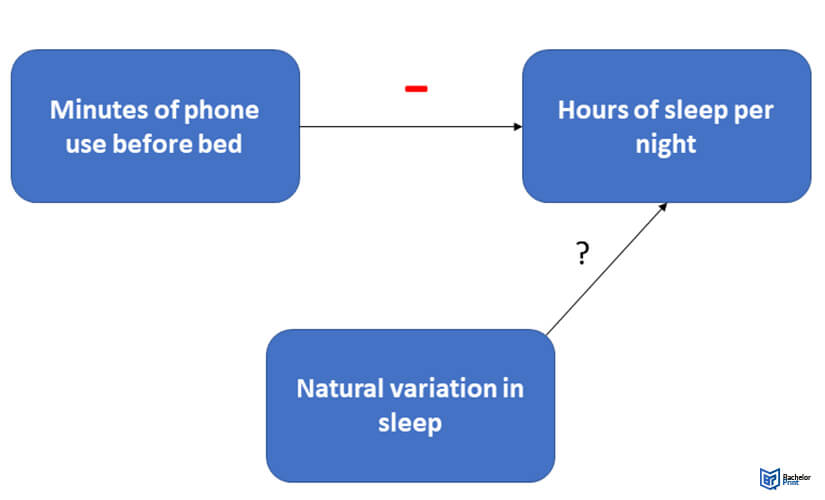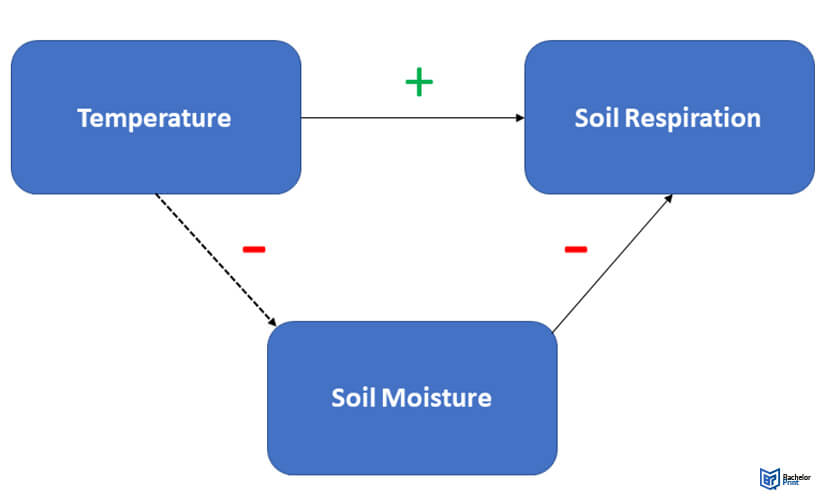
Experimental design is a rigorous methodology used by scientists to establish causal relationships between variables and gather empirical evidence. Changes are made to independent variables to determine and quantify the magnitude of changes in dependent variables. In this process, data collection conditions are carefully planned and structured to test hypotheses and uncover meaningful patterns.
Definition: Experimental Design
An Experimental design involves a series of steps used to test a hypothesis. When using an experimental design, one may keep experimental variables under tight control, hence reducing the risk of unwanted effects.
The experimental design procedure consists of five steps:
- Definition of variables
- Construction of a hypothesis
- Designing an experiment
- Assigning subjects
- Measuring the dependent variable
Step 1: Defining variables of the experimental design
Defining the independent and dependent variables pertinent to your research topic is the first stage in constructing an experimental design. Below are two examples of research questions, one from the health sciences and the other from ecology.
Independent and dependent variables
Identify the major variables and formulate hypotheses about their correlations to transform your research topic into an experimental design.
You can begin by listing down the independent and dependent variables.
| Experimental Design | Independent Variable | Dependent Variable |
| Example 1: Phone use | Minutes of phone use before bed | Hours of sleep per night |
| Example 2: Temperature and soil respiration | Air temperature near the soil surface | CO2 level respired by the soil |
Extraneous and confounding variables
Think about any potential extraneous and confounding variables and how to control them in your experiment.
| Experimental Design | Extraneous Variable | Control |
| Example 1: Phone use | Natural variation in sleep patterns | Control statistically: assess the difference between sleep with and without phone use before bed |
| Example 2: Temperature and soil respiration | Soil moisture impacts respiration and is affected by rising temperatures | Control experimentally: Monitor and adjust soil moisture by adding water to keep consistency |
Connecting the dots
As an overview, these variables may be arranged in a diagram. For this, utilize arrows to illustrate the potential correlation between variables. Additionally, signs allow you to indicate the expected direction of the interactions.

In this case, – predicts a negative impact and ? represents an unknown impact.

In this case, + indicates that rising temperatures affect the soil respiration positively, however they decrease soil moisture, which is illustrated by the dotted arrow. In turn, the soil respiration is impacted negatively, as soil moisture is decreasing.
Step 2: Writing a hypothesis for the experimental design
A hypothesis is the expected result of an experiment. Professionals document their hypotheses to evaluate the outcome of an experimental design.
| Experimental Design | Null Hypothesis (H0) | Alternate Hypothesis (H1) |
| Example 1: Phone use | No correlation between phone use before bed and amount of sleep per night | Increasing phone use before sleep reduces sleep duration |
| Example 2: Temperature and soil respiration | No correlation between rising air temperature and soil respiration | Increasing air temperature higher soil respiration |
Controlled experiments are common types of research used in an experimental design. Controlled experiments involve the following steps:
- Manipulate the independent variable(s) exact and systematically.
- Measure the dependent variable(s) accurately.
- Control all possible extraneous variables.
Step 3: Creating treatments for the experimental design
In the third step of an experimental design, you must choose how to influence the independent variable. In this process, the external validity of the experiment may be significantly impacted.
Before selecting the optimal method for manipulating an independent variable, you must first determine to what extend it should be varied.
Temperature and soil respiration experiment:
Increasing the air temperature:
- somewhat higher than the usual range for your region of study.
- over a greater extent to simulate future warming.
- spanning an extensive range that exceeds any natural variation.
The other option is to determine how thoroughly the independent variable should vary. Occasionally, your experimental design will make this decision clear for you, but often you’ll need to make a decision that will impact how much you can deduct from your results.
Phone use and sleep experiment:
You may opt to treat phone use as:
- A categorical variable
- A continuous variable
Step 4: Assigning subjects to the treatments for the experimental design
The first step is to determine the number of participants in the experiment. Generally, the more individuals you include, the better the statistical power of your experiment, which influences how confident you can be in the results.
Then, individuals must be assigned randomly to treatment groups. Also, include a control group that does not get treatment and only reveals what would have occurred to the test subjects if the experiment had not been conducted.
You may assign subjects into groups using:
- A completely randomized design vs. a randomized block design.
- A between-subjects design vs. within-subjects design.
Completely randomized design vs. randomized block design
There are two main approaches to randomization: a completely randomized design and a randomized block design:
- Completely randomized design: assigns participants at random to the treatment or control group.
- Randomized block design: the researcher does an initial search for potentially confounding variables, assigns participants to blocks based on that variable, and finally randomizes subjects to various groups.
| Experimental Design | Completely Randomized Design | Randomized Block Design |
| Example 1: Phone use and sleep | A random number generator is used to assign each subject a level of phone use | Subjects are initially categorized by age and then randomly given phone use treatments within these categories |
| Example 2: Temperature and soil respiration | Warming treatments are randomly allocated to soil plots by generating coordinates inside the study area with random number generator | Soils are categorized according to their average rainfall, and then treatment plots are assigned randomly within each group |
Between-subjects design vs. within-subject designs
There are two methods for assigning research participants to various conditions;
- Between-Subjects Design: different individuals test each condition so that each participant is only exposed to one treatment or condition.
- Within-Subjects Design: also called repeated-measures design, each condition is tested on the same set of people, and the findings are then compared across groups.
| Experimental Design | Between-Subjects Design | Within-Subjects Design |
| Example 1: Phone use and sleep | Subjects are randomly allocated a degree of phone use and are instructed to maintain that level during the experiment | Subjects are consecutively assigned to zero, low, and high levels of phone use for the duration of the trial. The sequence in which these treatments are administered is random |
| Example 2: Temperature and soil respiration | Soil plots are randomly assigned warming treatments, and this temperature is maintained throughout the experiment | Throughout the experiment, each plot receives the warming treatments (1, 3, 5, 8, and 10C above ambient and temperature) in a randomized order |
Step 5: Measuring the dependent variable in an experimental design
The last step of your experimental design is to choose how you will measure the dependent variable. It is essential to select a technique of data gathering that is trustworthy to eliminate bias.
Certain variables are more straightforward to quantify than others. Abstract or non-directly measurable variables must be operationalized to become observable quantities.
Phone Use and Sleep Experiment:
measure the dependent variable by either:
- Requesting participants to record their daily sleep and wake times.
- Requesting participants to use sleep-tracking devices.
FAQs
An experimental design prepares a series of procedures to examine the relationship between variables.
A well-conducted observational study does not impact the replies of participants. In contrast, an experimental design involves the random assignment of treatment conditions to at least some individuals.
While an experimental group, gets the treatment of being tested for its impact on the study’s findings, a control group is spared.
